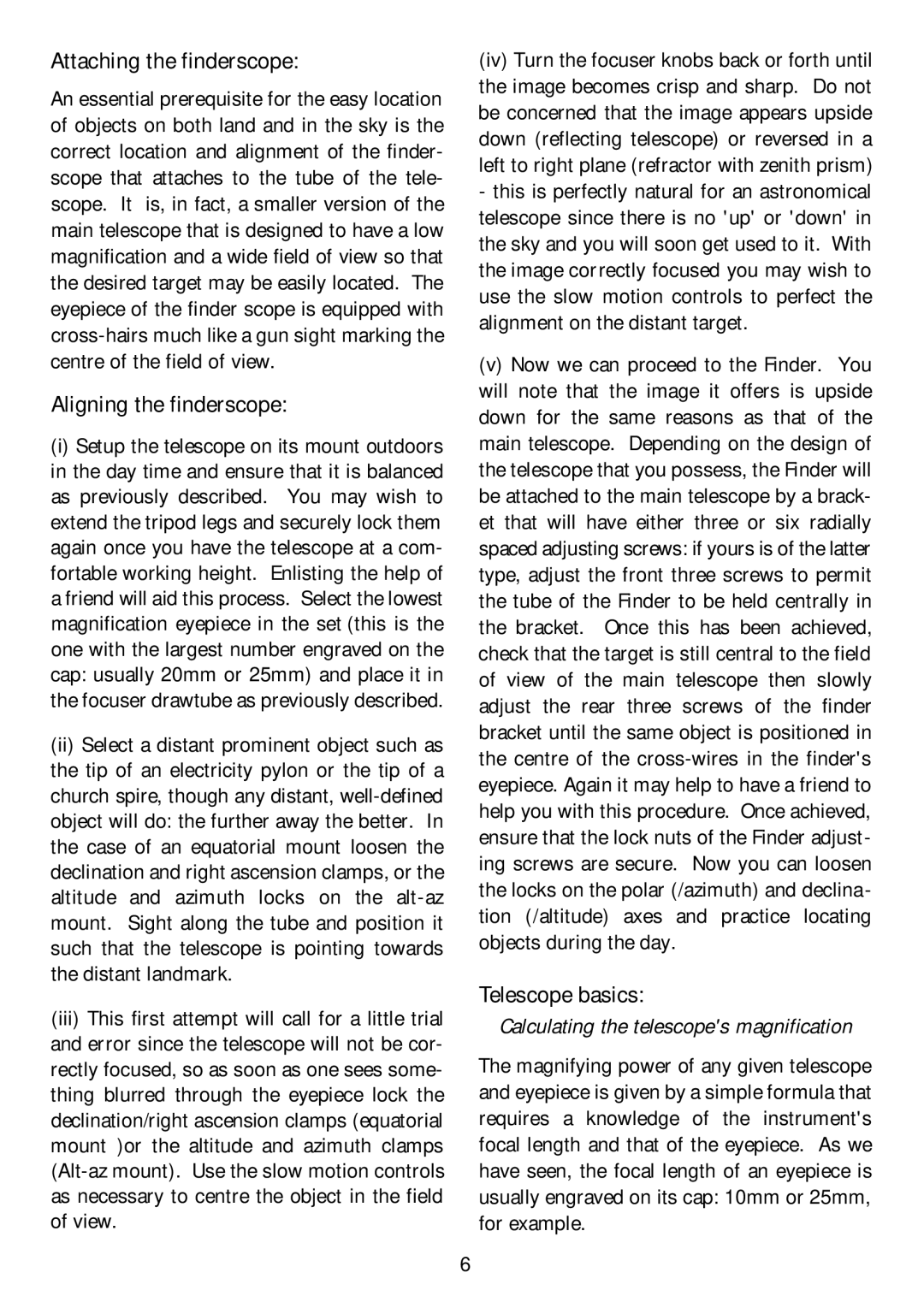Attaching the finderscope:
An essential prerequisite for the easy location of objects on both land and in the sky is the correct location and alignment of the finder- scope that attaches to the tube of the tele- scope. It is, in fact, a smaller version of the main telescope that is designed to have a low magnification and a wide field of view so that the desired target may be easily located. The eyepiece of the finder scope is equipped with
Aligning the finderscope:
(i)Setup the telescope on its mount outdoors in the day time and ensure that it is balanced as previously described. You may wish to extend the tripod legs and securely lock them again once you have the telescope at a com- fortable working height. Enlisting the help of a friend will aid this process. Select the lowest magnification eyepiece in the set (this is the one with the largest number engraved on the cap: usually 20mm or 25mm) and place it in the focuser drawtube as previously described.
(ii)Select a distant prominent object such as the tip of an electricity pylon or the tip of a church spire, though any distant,
(iii)This first attempt will call for a little trial and error since the telescope will not be cor- rectly focused, so as soon as one sees some- thing blurred through the eyepiece lock the declination/right ascension clamps (equatorial mount )or the altitude and azimuth clamps
(iv)Turn the focuser knobs back or forth until the image becomes crisp and sharp. Do not be concerned that the image appears upside down (reflecting telescope) or reversed in a left to right plane (refractor with zenith prism) - this is perfectly natural for an astronomical telescope since there is no 'up' or 'down' in the sky and you will soon get used to it. With the image correctly focused you may wish to use the slow motion controls to perfect the alignment on the distant target.
(v)Now we can proceed to the Finder. You will note that the image it offers is upside down for the same reasons as that of the main telescope. Depending on the design of the telescope that you possess, the Finder will be attached to the main telescope by a brack- et that will have either three or six radially spaced adjusting screws: if yours is of the latter type, adjust the front three screws to permit the tube of the Finder to be held centrally in the bracket. Once this has been achieved, check that the target is still central to the field of view of the main telescope then slowly adjust the rear three screws of the finder bracket until the same object is positioned in the centre of the
Telescope basics:
Calculating the telescope's magnification
The magnifying power of any given telescope and eyepiece is given by a simple formula that requires a knowledge of the instrument's focal length and that of the eyepiece. As we have seen, the focal length of an eyepiece is usually engraved on its cap: 10mm or 25mm, for example.
6
